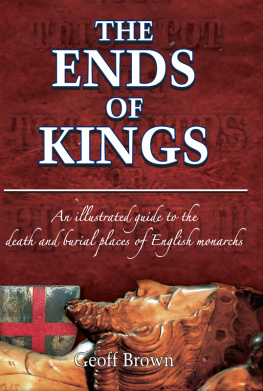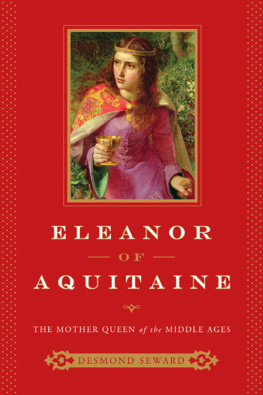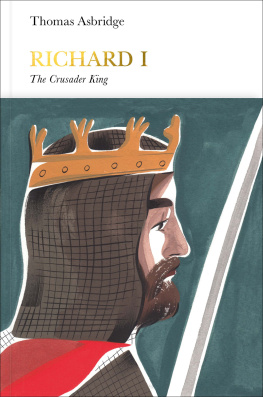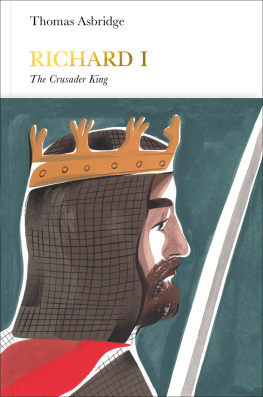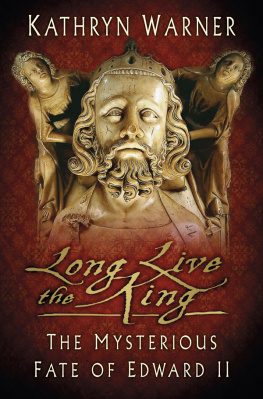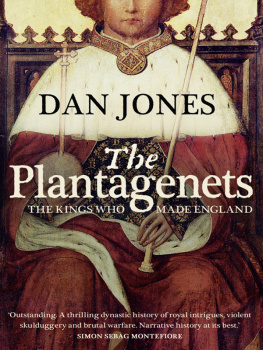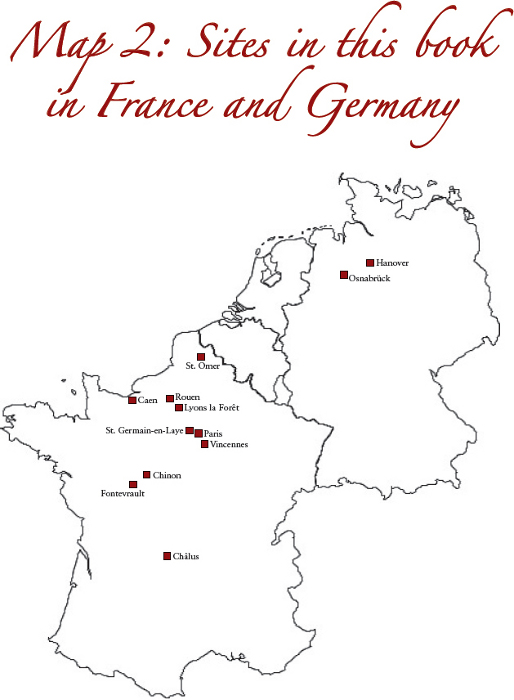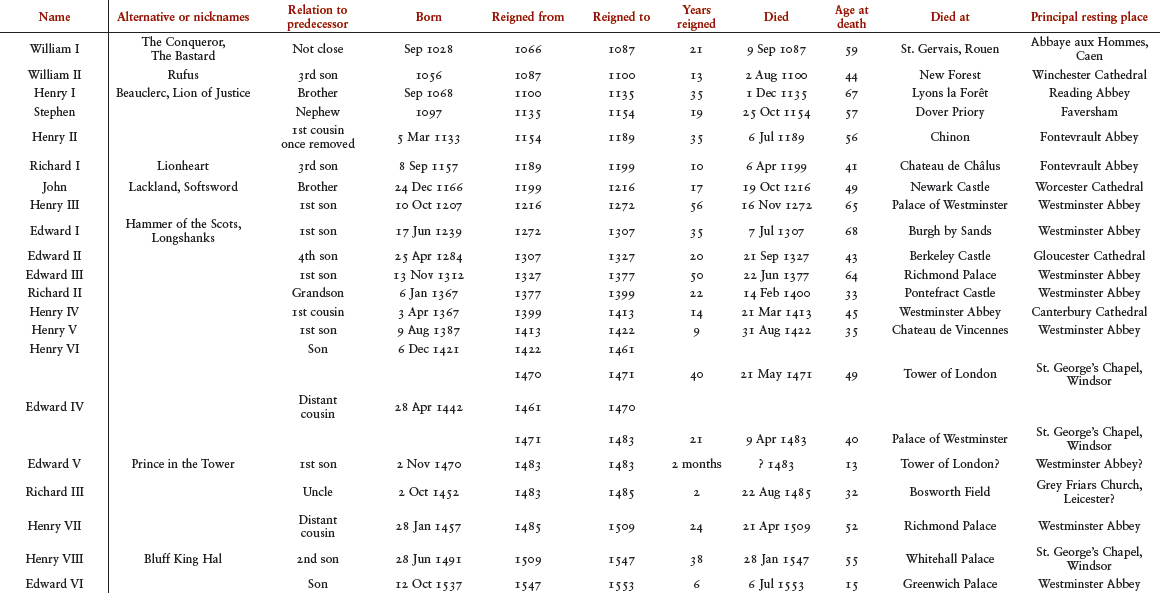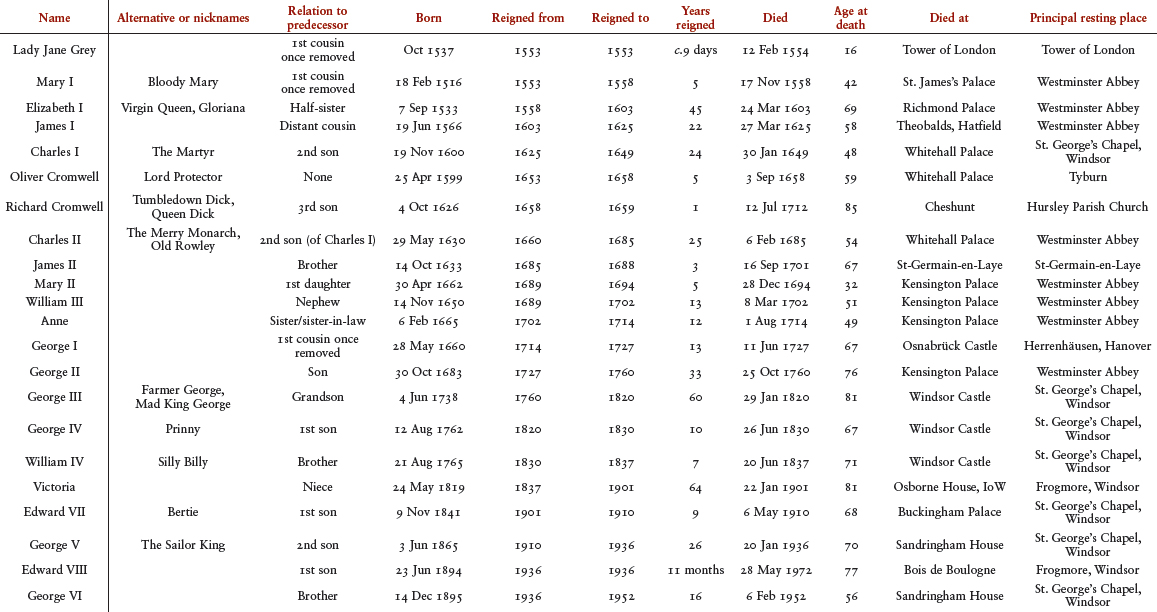For Alice, with love
Front cover: Detail from the tomb of Edward II. With kind permission of Gloucester Cathedral Dean and Chapter. Photograph by Thomas Vivian.
Rear cover: Memorial to Edward I at Burgh-by-Sands.
This electronic edition published 2013
Amberley Publishing
The Hill, Stroud, Gloucestershire
GL5 4EP
www.amberley-books.com
Copyright Geoff Brown 2009, 2013
ISBN 9781848682306 (PRINT)
ISBN 9781445631431 (e-BOOK)
All rights reserved. No part of this book may be reprinted or reproduced or utilised in any form or by any electronic, mechanical or other means, now known or hereafter invented, including photocopying and recording, or in any information storage or retrieval system, without the permission in writing from the Publishers.
British Library Cataloguing in Publication Data.
A catalogue record for this book is available from the British Library.
Contents
Table of Kings and Queens
Introduction
My name is Ozymandias, King of Kings:
Look on my works, ye Mighty, and despair!
Nothing beside remains. Round the decay
Of that colossal wreck, boundless and bare,
The lone and level sands stretch far away.
(Percy Bysshe Shelley)
Kings and queens have always fascinated. They are central to every European countrys history, and endowed with a mystique of power, glamour and fairytale. Naturally, historians pay most attention to their lives and achievements, but the death of a king or queen was a hugely important event at the time, often heralding revolution, invasion, dynastic change, radical new policies, unwonted alliances or civil war. Even when the transition was not so turbulent, passing safely from father to eldest son or other nominated heir, it was always a moment to mark, and a time to dust down the pomp and ceremony to show off at a funeral and coronation. Deaths rarely just happened unless during an act of war. In the final months or years ministers, courtiers and heirs apparent would plan and plot, conspire and meddle, sometimes judiciously hastening the end, in order to safeguard their own position or protect the country from catastrophe. Foreign potentates took great interest in events, seeing an opportunity for a landgrab, or for an extension of their spheres of influence, or perhaps the need for heightened diplomatic niceties to prevent war with an aggressive successor. Magnates would take stock of their position, of how much favour they held with the successor, and whether their alliances and political scheming under their old master would spell danger for them under their new. The common people never greeted a monarchs demise with indifference; it was almost always a period of public mourning or rejoicing, whether real or enforced. It is easy to forget what impact a king or queens death has, even in todays democratic society, when the last one in Britain occurred over fifty years ago.
Much can be learned about a king or queen from where they died. Edward I in Cumbria on his way to hammer the Scots. Richard the Lionheart in typical belligerent style pushing out his frontiers in the heart of the Limousin. Henry V pursuing his claim for the French throne, with unrelenting vigour, just outside Paris. George IV in his overly-ornate state apartments in Windsor Castle. George VI at his rural retreat in the rich hunting land of Norfolk. And what better place to contemplate the thoughts, actions and lives of these outstanding characters than at their tombs? Everlasting greatness was a desire common to many kings and queens. Sometimes this shines through in the splendid abbeys, chapels and tombs they helped design to house their mortal remains. Sometimes its a perverse antithesis of all that they once were an anonymous, half-worn slab of stone. You can ponder Henry I in the ruins of Reading Abbey, sad blocks of masonry that once formed the second largest abbey in England. Stephen lost forever in the pretty Kentish town of Faversham. John in isolated glory before the altar of Worcester Cathedral. Henry VII in his magnificent monument at the beating heart of British history, Westminster Abbey. Or Edward VIII seemingly still in partial exile in Frogmore. Following the trail of the deaths and burials of kings and queens leads you to some of the best corners of England (and France and Germany too!) This book will guide you to those places, whether you want to make a specific journey or just happen to be nearby. Almost all are fully accessible, most are proud of and knowledgeable about their royal association and do their best to welcome you to find out more.
Some monarchs are appealing, admirable characters. Others are repugnant. Likewise, some of the locations in this book are wonderful, evocative places, whilst others require a little more imagination to kindle the magic of history. All are worth a visit for anyone interested in royalty. To recommend a top five I have to avoid any bias to a king or queen whom I find particularly colourful (and I admit to a penchant for Henrys I and II) but I think these will provide much pleasure to almost anyone:
1. Fontevrault Abbey. A huge complex of monastic buildings from across the centuries, all built in a serene yet stark white stone. The painted effigies of Henry II and his rebellious son Richard I lie in peaceful harmony in the nave of the otherwise empty church. Could such still figures really represent the fizzing, brutal and ambitious characters we know they once were?
2. Westminster Abbey. Stunning architecture, overflowing with statues, tombs and memorials to the famous and worthy of the country. No trip to visit royalty is complete without a specially guided tour to the heart of the abbey, the shrine of Edward the Confessor. Here you can gaze (or rather attempt to gaze, as it is rather high up) at possibly the most moving tomb effigy of them all Henry III.
3. Edward I monument. So near yet so far. The aged Edward was on his way to quell the Scots forever, but died within sight of Scotland, at the furthest outreach of his kingdom. With him died the hopes of northern Englishmen, and consigned the region to centuries of border raids and pillaging. The monument is in the midst of the salt marshes of the Solway Firth, with little around it but birdsong and the tugging wind.
4. The Rufus Stone. Not far from a busy trunk road in the New Forest, a most unlikely setting for a royal death. But is there an unsolved mystery of royal murder and treachery here, or was it really just an accident? Well never know of course, but its certainly one of the best signposted and most well-visited sites, for perhaps the least-known of all our monarchs. And there are few better spots for a walk and a picnic than the New Forest.
5. Tyburn. Not because its beautiful, or particularly interesting. In fact there are few sites in this book that are less appealing. Rather because you hear so much about the infamous hanging tree of Tyburn, but its location is rarely given. If you successfully navigate the busy roads (there are no crossing points) and ignore the litter and weeds on the traffic island, youll find a nice little circular stone marking the spot, and you have to imagine quite hard that Oliver Cromwells body lies somewhere near

